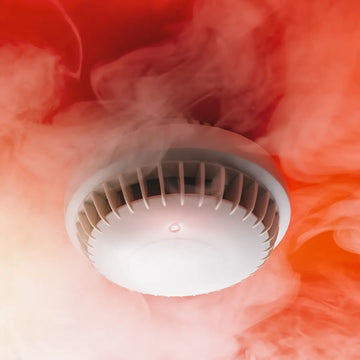
Is it possible for a vape to trigger a fire alarm? While vaping has rapidly gained popularity as a healthier alternative to smoking, concerns have arisen regarding its potential impact on safety systems such as fire alarms. This exploration into the question of whether a vape can set off a fire alarm involves a thorough examination of fire alarm mechanics, vape device components, and any potential risks associated with vaping in proximity to these safety systems.
Understanding Fire Alarms: Fire alarms are designed to detect smoke or heat, serving as early warning systems for potential fires. These alarms typically employ smoke sensors using various technologies, including ionization and photoelectric sensors. Each sensor type is adept at detecting specific particles, from those produced by fast-burning fires to larger particles emitted by smoldering ones.
Vaping Devices: E-cigarettes or vaporizers, commonly known as vape devices, function by heating liquids containing nicotine, flavorings, and other chemicals into an aerosol for users to inhale. Unlike traditional cigarettes, vaping generates less smoke and odor. However, visible vapor produced by vaping devices may still trigger sensors in certain types of smoke detectors, depending on the sensitivity and technology of the specific system in place.
Influences on Fire Alarm Activation: Several factors determine whether an electronic vaporizer device may trigger a fire alarm:
-
Proximity to Smoke Detectors: Vaping near smoke detectors may cause the vapor to reach sensors and set off alarms, as these detectors are strategically placed for optimal coverage.
-
Types of Smoke Detectors: Different types of smoke detectors, such as photoelectric detectors, may be more sensitive to false alarms caused by aerosols like vape vapor compared to ionization detectors.
-
Ventilation and Airflow: Ventilation and airflow in a given space can significantly impact the dispersion of vapor. Adequate ventilation may reduce the likelihood of vapor reaching smoke detectors.
-
Density and Composition of Vapor: The density and composition of vape vapor, influenced by the type of e-liquid and vaping device, play a crucial role in its behavior around smoke detectors.
-
Humidity Levels: High humidity levels can affect the behavior of vape vapor around smoke detectors, potentially reducing the likelihood of setting off alarms.
Mitigating Risk: To minimize the risk of setting off fire alarms while vaping, individuals can take the following steps:
-
Vape in Designated Areas: Limit vaping to designated smoking or vaping areas equipped with ventilation systems designed to minimize the impact on neighboring spaces.
-
Be Wary of Alarm Locations: Avoid vaping near smoke detectors to decrease the chances of triggering an alarm accidentally.
-
Vape in Open and Well-Ventilated Spaces: Choose open areas with sufficient ventilation to disperse vapor particles rapidly, reducing their potential impact on smoke detectors.
-
Humidifiers: Increasing humidity levels may make vape vapor less likely to set off smoke detectors, but this may not always be practical.
Conclusion: The question of whether a vape can set off a fire alarm lacks a straightforward answer. Various factors, including device type, proximity, and environmental conditions, influence the likelihood of activation. Vapers should remain vigilant, taking steps to minimize risks, while ongoing research and advancements in smoke detection technology may contribute to making alarm systems less prone to false alarms due to vaping.
Taking a balanced approach involves considering both the potential risks and benefits associated with vaping, adhering to designated areas, and remaining aware of any possible impacts on safety systems such as fire alarms.




